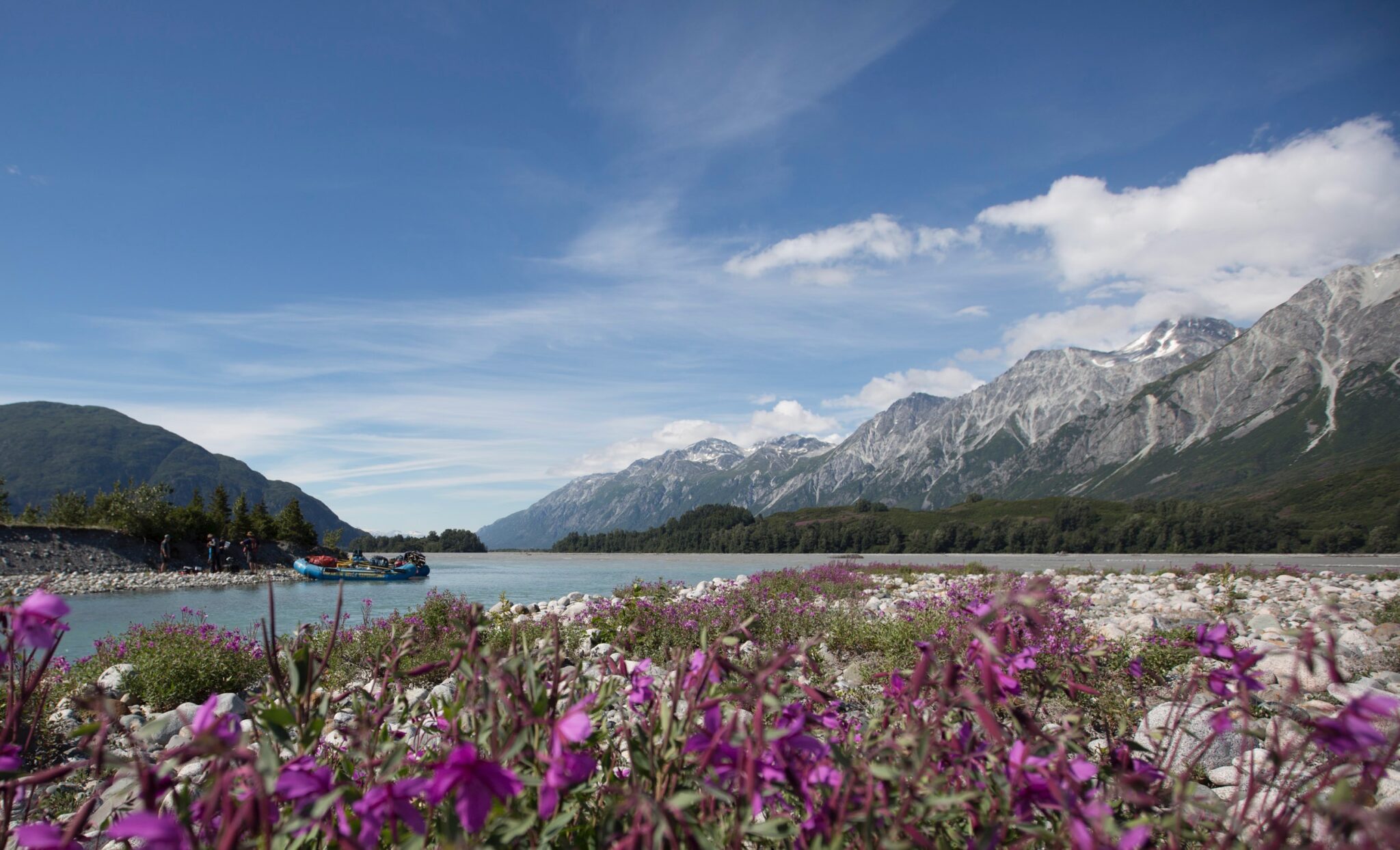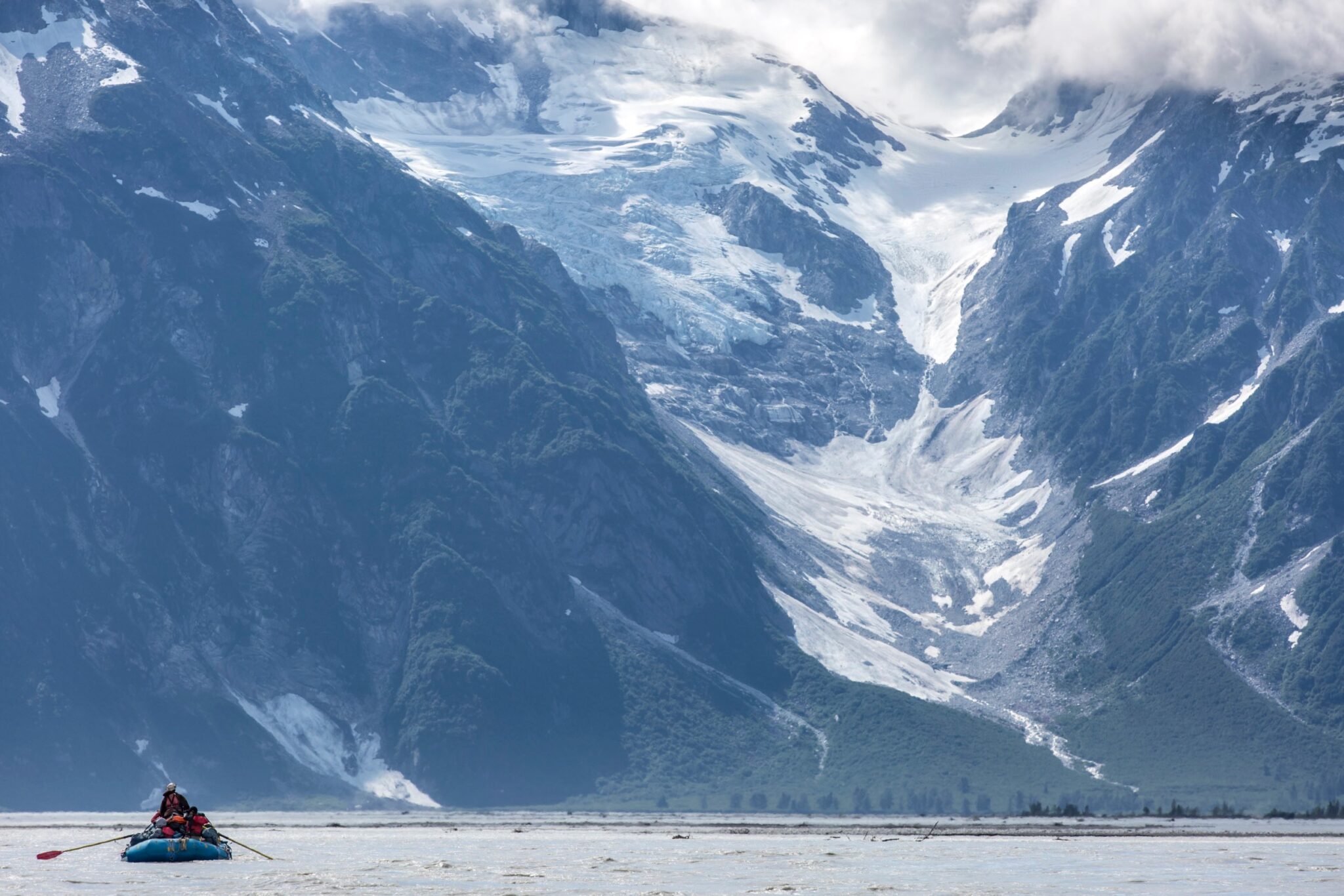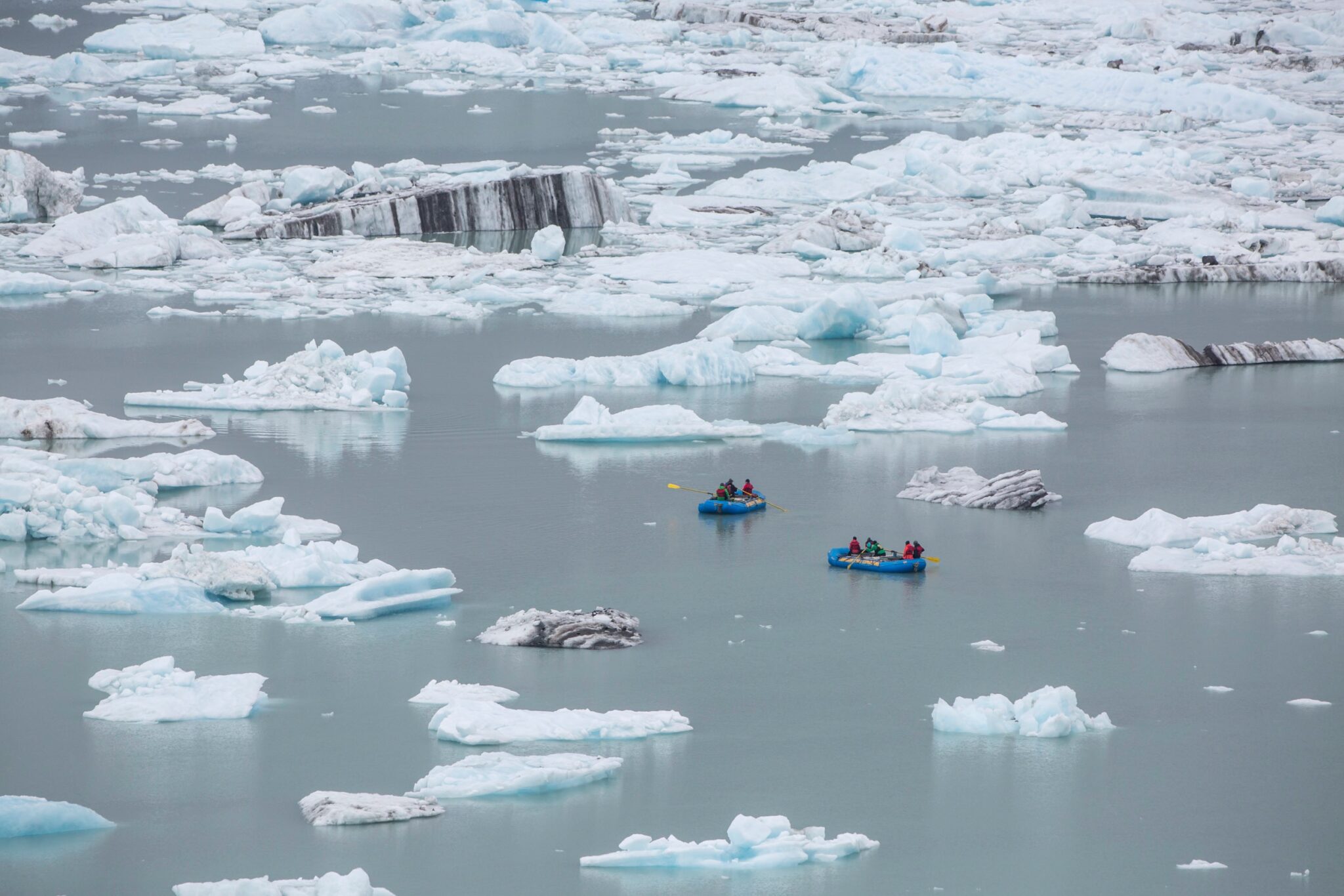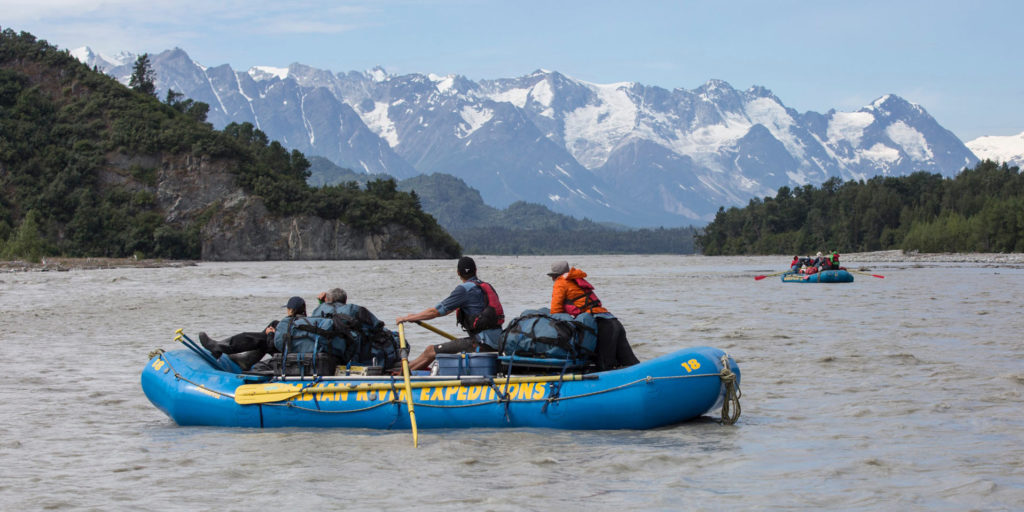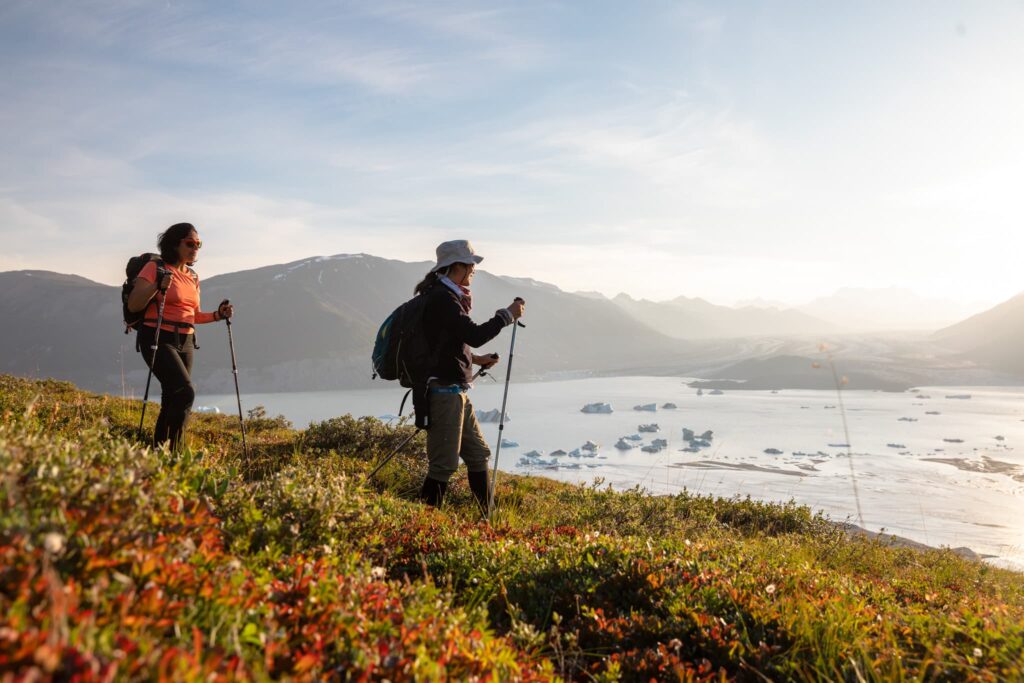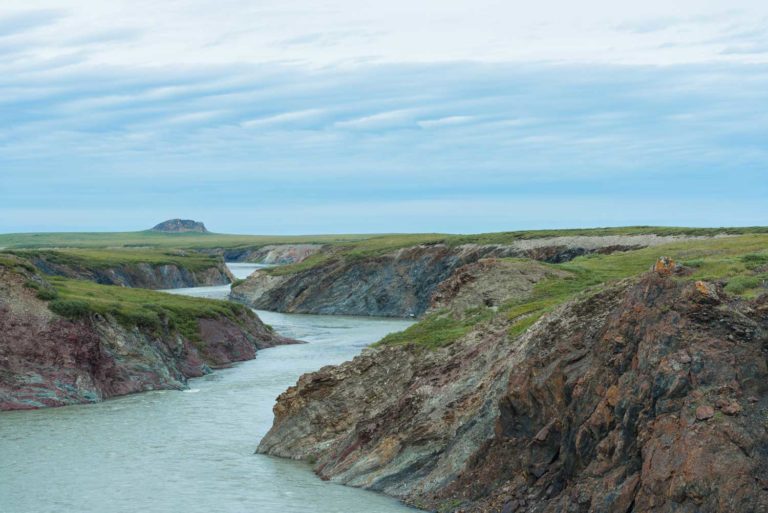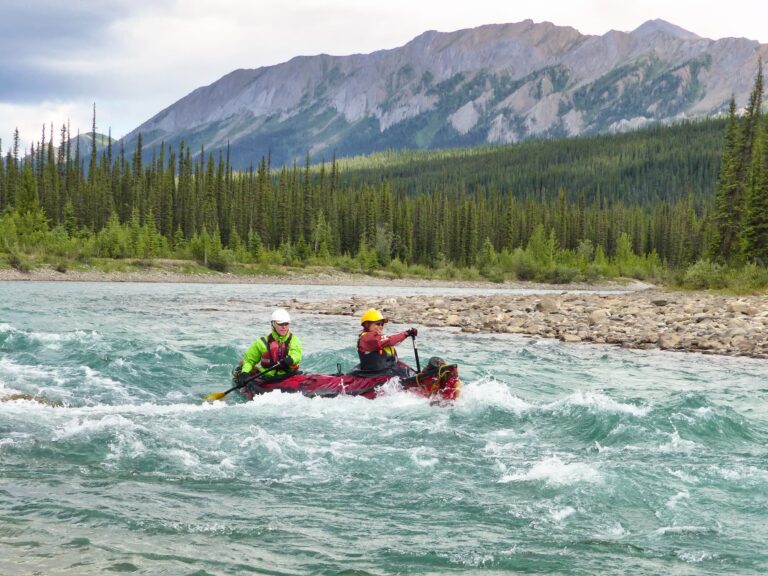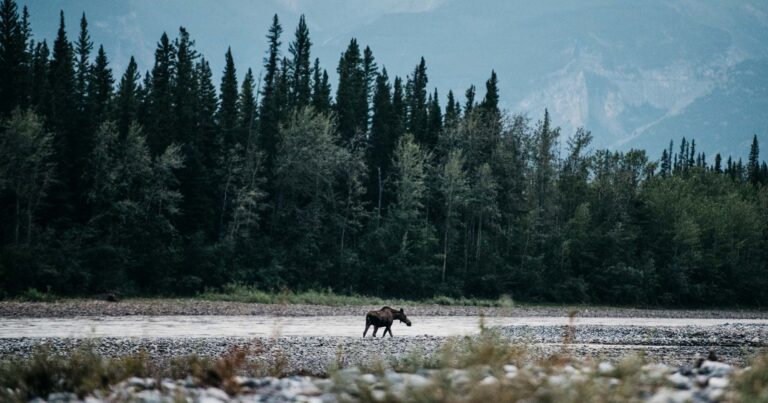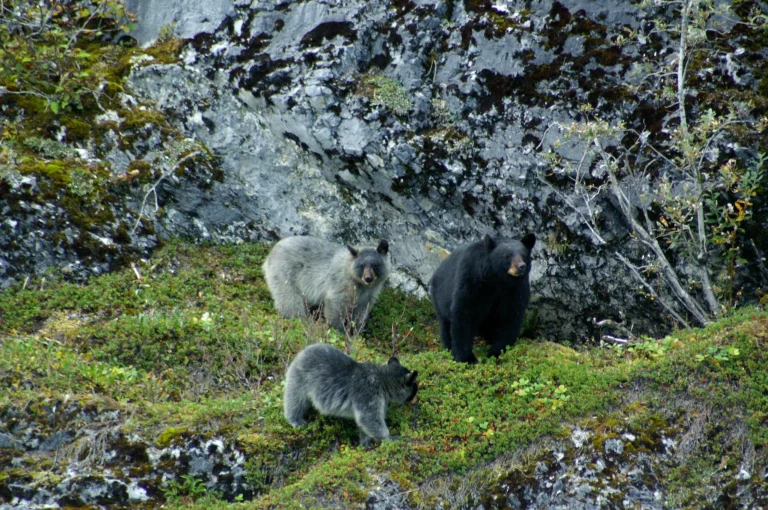As a Northern river guide it has been my privilege to spend nine seasons in the North and now more than a year of my life on the Nahanni, Alsek, Firth and Tatshenshini rivers.
Each of these river corridors holds more beauty than is possible to share through writing or photographs. And If you love rivers, you know that each one has its own unique character, a distinct personality with which you become intimately familiar with as you spend days immersed in “river time”. As I watch the seasons change, the weather play across the land, and the water levels shift each day sees me growing more fond of these earthly vein of life.
Of all these northern rivers, for me, the Tatshenshini is in many ways the most interesting. For me the magic of the Tatshenshini exists in the holistic experience from start to finish. It is truly the river equivalent to a symphony!
Fom the moment you meet its waters, the Tatshenshini is unquestionably beautiful. The mountains of the Alsek range loom in the distance as we launch our rafts into a narrow, swift stretch of river. The Boreal forest envelopes us on either side and we spend the first two days of the journey weaving our way through the narrows of the Tatshenshini and Stillwater canyons.
It is in the intimacy of these narrow and winding stretches of the Tatshenshini that we often happen across cow moose and their calves. It is where we watch swifts and bank swallows dancing on a gentle breeze, hunting for insects in the midnight sun. Where we make camp for the night at a spot named “wolf howl” and listen for the haunting calls in the distance as we fall asleep.
As we journey deeper into the mountains we pass ridge after ridge until we find ourselves at Sediments Creek. Here the Alsek range greets us and we begin to feel we are at home among the mountains. We enjoy a well earned layover day and let our senses adjust to the larger than life landscapes we are now surrounded by.
Just as the mountains around us continue to grow in height and proximity, so too does the river begin to morph.
Sediments Creek marks the first of several large tributaries that meet the Tatshenshini in the coming days. Alkie Creek, O’Connor River, Tkope River, Henshi Creek, Tomahnous Creek, Tats Creek and Towagh Creek all flow into the Tatshenshini within a 30 kilometre stretch of river fondly known to guides as the “Wind Tunnel, ” and each is a part of the narrative of this landscape.
Tributary by tributary, we raft down a river unrecognizable to the one we began our journey on. Each of these tributaries are fed by the glaciers of the world’s largest non-polar ice field. Here, the Tatshenshini is fed by remnants of the last ice age and I always find wonder in floating on a collection of ancient water molecules making their way from mountain to sea.
The river becomes an expansive series of braided channels and then suddenly converges into a fast flowing race track as we approach the confluence of the Alsek River and the heart of the Wrangell- St. Elias Mountains. This braided section of river, like the upper stretches of the Tatshenshini, provides a unique opportunity to catch intimate glimpses of the wild creatures that live here.
While leading a trip down the Tatshenshini in 2019, I rowed around a corner and came upon a gorgeous blonde Grizzly sow and her three spring cubs, not twenty feet from us on a gravel bar. At the sight of our big blue raft, the Grizzly Momma retreated for the bushes followed closely by her three tiny, golden cubs.
From here, the Noisy Range becomes prominent on our river right and we know that the milky blue waters of Melt Creek will enter soon. We camp beside these pristine waters and watch as the light blue glacial melt swirls into the sediment laden waters of the Tatshenshini. Across from us, the grey hues of the mountains will glow in the descending sun and the foothills are speckled in patches of dwarf fireweed, a vibrant purple.
The mountains around us are now a towering amphitheater of rock and ice. Glaciers drape across them like torn, cryospheric blankets. Grizzly bears patrol the gravel bars between us and the opposite shore, fishing for salmon. Eagles too, hunt these braided channels and we witness life unbothered by masses of people and sprawling infrastructure. Here bears can be bears, eagles can be eagles and we can be rafters; delighted by these scenes.
As we look downstream we can see where the Tatshenshini sprawls steeply towards the mighty Alsek. When we put back on the river, we say goodbye to the Tatshenshini and flow into a river that seems ocean like in character. The Alsek rises and falls like sea swell with the immensity of the combined volume of these waterways.
Downstream, the braided river is kilometers wide in places and the colosseum of rugged, glaciated peaks reminds me of an Edward Abbey quote from The Monkey Wrench Gang:
"There are some places so beautiful they can make a grown man break down and weep".
This is one such place, I think.
We float across the invisible border into Alaska, round “Kodak Corner” and catch our first glimpse of Walker Glacier. This tongue of ice flows nearly to the river’s edge and we take a short hike to the small glacial lake that has formed between its foot and the river. Icebergs of various shapes and sizes appear as a myriad of ice sculptures.
Our guests will always laugh as we guides pull straws for who will have to strip down to their underwear and wade out into the frigid waters to collect a hunk of ice large enough for our cocktails that night!
A kilometer downstream of Walker Glacier, we stop to fill our water jugs at Dipper Creek. This crystal clear creek cascades down a steep boulder path and we rinse our hair and faces and drink in the view of Sapphire Glacier across from us.
The visual crescendo continues to build as we raft towards the ultimate climax: Alsek Lake. On a clear day, we see Mount Fairweather dwarfing all other mountains around it. It stands, the prominent sentinel, 4, 653 meters high. We see the unmistakable “Gateway Knob” in the distance: our last camp of the journey and as we enter the lake, cruise ship sized icebergs come into view. Distant rumbling brings our attention to the magnificent Alsek Glacier- a massive river of ice calving into the lake.
Our last days of the journey are spent here, listening to a chorus of glacial rumbles and rolling icebergs and watching the Fairweather Range glow a pale pink in the setting sun.
It’s difficult to comprehend that the small river we began on has carried us so far and to such a wondrous place.
Each time I climb aboard the plane that will return us to Whitehorse I know a little bit of my heart has been left in this watershed and that I cannot wait to return.
Ursula Kilbridge
Guide and Expedition Planner


